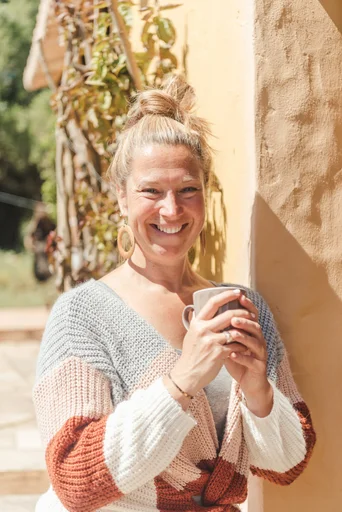Yoga for Scoliosis: How Your Practice Can Create Symmetry in the Body

Discovering the Power of Yoga in Your Journey with Scoliosis
Living with scoliosis can present unique challenges, but the practice of yoga offers a powerful and transformative way to address the condition. By understanding the impact of scoliosis on the body and exploring the science behind yoga's ability to promote symmetry, individuals can discover a path towards greater balance and well-being.
Understanding Scoliosis and Its Impact on the Body
Scoliosis is characterized by an abnormal curvature of the spine, often leading to lower back pain and stiffness. This condition affects approximately 2-3 percent of the population in the United States, with an estimated 6 to 9 million individuals impacted. While it may not be possible for yoga to cure or reverse scoliosis, it has been shown to be a beneficial complementary therapy for managing the condition and improving overall well-being. Research has indicated that regular yoga practice can lead to a reduction in scoliosis curves, offering hope for those seeking relief from its symptoms.
The prevalence of adolescent idiopathic scoliosis worldwide is approximately 0.93–12%, highlighting the widespread impact of this condition on individuals across different age groups. Furthermore, scoliosis affects around 6 million people in the US alone, leading to more than 600,000 doctor visits each year.
The Science Behind Yoga and Symmetry
Yoga plays a crucial role in promoting symmetry within the body. Scientific research has demonstrated that basic yoga poses, when practiced consistently over time, can lead to significant reductions in scoliotic curves. For instance, a simple pose performed for an average of only 1.5 minutes a day, six days a week for two months, resulted in an average reduction of 32% in scoliotic curves among adolescent and adult patients.
Moreover, yoga helps by increasing flexibility, strengthening muscles, and promoting better posture and body awareness. It focuses on aligning the spine while incorporating breathing awareness to improve structural alignment. As such, it addresses key areas such as strengthening core muscles to prevent back tightening and aligning lower limbs with the torso for improved function.
Incorporating yoga into your journey with scoliosis can be empowering as you work towards creating greater harmony within your body.
Building Symmetry and Strength: Yoga Practices for Scoliosis

As you embark on your yoga journey to address scoliosis, it's essential to incorporate specific yoga practices that promote symmetry and strengthen the body. These key yoga poses are designed to target areas affected by scoliosis, offering a path towards greater balance and well-being.
Key Yoga Poses for Promoting Symmetry
Pose 1: Mountain Pose for Alignment
The Mountain Pose is a foundational posture that focuses on grounding and alignment. By standing tall with feet hip-width apart, arms relaxed by your sides, and shoulders rolled back, you can actively engage your leg muscles while lengthening the spine. This pose promotes symmetry by encouraging equal weight distribution between both feet, helping to alleviate any imbalances caused by scoliosis.
Pose 2: Tree Pose for Balance
The Tree Pose is a balancing posture that not only strengthens the legs but also enhances overall stability. By rooting one foot into the ground and placing the sole of the other foot against the inner thigh or calf, you can find stability through focused concentration and steady breathing. This pose encourages symmetry by engaging the core muscles and improving posture, addressing the effects of scoliosis on body alignment.
Strengthening Your Core and Back
Pose 3: Plank for Core Strength
The Plank pose is an effective way to strengthen the core muscles, which play a crucial role in supporting the spine. By assuming a push-up position with your palms pressing into the ground and your body forming a straight line from head to heels, you engage multiple muscle groups simultaneously. This pose promotes symmetry by targeting the abdominal muscles, ultimately contributing to improved spinal stability.
Pose 4: Cobra Pose for Back Muscles
The Cobra Pose is a gentle backbend that helps strengthen the muscles along the spine while promoting flexibility. As you lie on your stomach with palms placed beneath your shoulders, gently lift your chest off the ground while keeping your pelvis grounded. This pose not only stretches the front body but also strengthens the back muscles, addressing issues related to scoliosis such as asymmetry in muscle strength.
Incorporating these key yoga poses into your practice can contribute significantly to creating symmetry within your body while building strength in areas affected by scoliosis.
Real Stories of Transformation: How Yoga Changed Lives
Yoga has the power to transform lives, offering individuals with scoliosis a renewed sense of balance and well-being. Let's explore real stories of how yoga has made a positive impact on individuals, from teenagers navigating the challenges of scoliosis to parents supporting their children's yoga practice.
Journey of a Teen: From Imbalance to Harmony
Before Yoga: Challenges Faced
Imagine the daily struggles faced by a teenager living with scoliosis – the discomfort, the feeling of imbalance, and the physical limitations that can impact everyday life. Before discovering yoga, these challenges often seemed insurmountable. The curvature of the spine led to persistent back pain, affecting posture and mobility. Traditional treatments provided limited relief, leaving a sense of frustration and helplessness.
After Yoga: Achievements and Improvements
Through consistent dedication to a yoga practice tailored for scoliosis, remarkable improvements were observed. The incorporation of specific yoga poses designed to promote symmetry and strengthen core muscles led to increased flexibility and reduced discomfort. Over time, the individual experienced enhanced body awareness and alignment, contributing to improved posture and reduced pain levels. With perseverance and guidance from a supportive instructor, this journey culminated in a newfound sense of harmony within the body.
A Parent’s Perspective: Supporting Your Child’s Yoga Practice
As a parent, supporting your child's journey with scoliosis through yoga can be an enriching experience that fosters resilience and well-being.
Encouraging Participation
Encouraging your child to engage in yoga practice tailored for scoliosis is an opportunity to instill confidence and empowerment. By providing gentle encouragement and understanding, you can create a supportive environment where your child feels motivated to explore the benefits of yoga. Recognizing their progress and celebrating small victories along the way can further inspire them on their transformative journey.
Observing Changes and Progress
As your child embraces yoga as part of their routine, observe the positive changes taking place. Notice improvements in their posture, increased ease in movement, and a growing sense of self-assuredness. Through open communication with your child's instructor or healthcare provider, gain insights into how yoga is contributing to their overall well-being. Witnessing firsthand the positive impact of yoga on your child's life can be deeply rewarding.
Yoga has indeed played an instrumental role in transforming lives affected by scoliosis, offering hope, strength, and renewed vitality.
Taking the First Step: Tips to Begin Your Yoga Practice Safely

Embarking on a yoga practice tailored for scoliosis is an empowering journey towards nurturing your body and promoting symmetry. As you take the first step, it's essential to find the right guidance and create a supportive environment that allows you to explore the transformative benefits of yoga.
Finding the Right Yoga Instructor and Class
When initiating your yoga practice, finding a knowledgeable and supportive instructor is crucial. Look for an instructor who possesses the following qualities:
Qualities to Look For in an Instructor
Experience: Seek an instructor with experience in working with individuals with scoliosis or other similar conditions. Their expertise will ensure that they can provide appropriate modifications and guidance tailored to your specific needs.
Empathy: A compassionate and understanding approach is essential. An instructor who empathizes with your journey can offer valuable support, creating a safe space for exploration and growth.
Adaptability: The ability to adapt poses and sequences based on individual requirements is vital. Your instructor should be able to modify traditional yoga poses to accommodate any limitations or asymmetries resulting from scoliosis.
As for the types of yoga classes suitable for scoliosis, consider exploring:
Types of Yoga Classes Suitable for Scoliosis
Gentle Yoga: This type of class focuses on slow, gentle movements and is ideal for individuals seeking a more relaxed approach to yoga. It can be particularly beneficial for those managing discomfort associated with scoliosis.
Hatha Yoga: Hatha classes typically involve basic yoga poses with a focus on breathing exercises and meditation. The gentle nature of Hatha yoga makes it suitable for individuals looking to build strength while promoting relaxation.
Creating a Safe and Supportive Practice Environment at Home
Designing a safe and supportive environment at home is essential as you begin your yoga practice. Consider the following tips to establish an environment conducive to your well-being:
Essential Yoga Tools and Props
Yoga Mat: Invest in a high-quality, non-slip yoga mat that provides adequate cushioning and stability during your practice.
Yoga Blocks: These props can assist in achieving proper alignment in various poses, especially if you experience limitations due to scoliosis.
Yoga Strap: A strap can aid in reaching certain poses comfortably by extending your reach when flexibility is limited.
Designing a Routine That Works for You
Crafting a personalized routine that aligns with your needs is key. Consider the following factors when designing your practice:
Time Commitment: Determine how much time you can dedicate to your practice each day or week, ensuring it aligns with your schedule.
Pose Selection: Choose poses that promote symmetry, strengthen core muscles, and enhance flexibility – all beneficial aspects when managing scoliosis.
Rest Integration: Incorporate moments of rest or relaxation within your routine, allowing time for reflection and rejuvenation.
Empowering Your Path Forward
Embracing Yoga as a Lifelong Companion
Yoga has the remarkable ability to become a lifelong companion in your journey with scoliosis, offering not only physical benefits but also spiritual and emotional nourishment. By integrating yoga into your daily routine, you can set realistic goals and expectations that align with your unique needs and aspirations.
Setting Realistic Goals and Expectations
As you embark on this transformative path, it's essential to set realistic goals that honor the progress you make at every step. Consider the experiences of individuals who have embraced yoga for scoliosis:
Testimonials:
Individual with scoliosis: I have scoliosis and, after reading your article last May, decided I would try yoga. I cannot even explain how it has helped me. I, along with my family, see a miraculous difference.
Individual with scoliosis: For most of my life, I believed that yoga was not for me because I have scoliosis. Each time I attended a class in which students were instructed to move one vertebra at a time or to align the spine, I felt excluded and somehow defective.
These testimonials reflect the diverse experiences of individuals who found empowerment through yoga despite their initial doubts. By acknowledging your unique journey and progress, you can cultivate an enriching practice that celebrates each small victory along the way.
Celebrating Small Victories
Every moment of progress is worth celebrating – from improved posture to enhanced flexibility and reduced discomfort. The journey of an individual who experienced significant relief through yoga serves as a testament to the power of perseverance:
Testimonial:
Individual with scoliosis: I completed scene 1 and I can honestly say, I have never felt so good after a 20-minute session ever, period! There were stages when my back felt the most normal it has in a decade!
By recognizing these small victories, you can foster a sense of resilience and determination as you continue on your path towards greater well-being.
A Final Word of Motivation
In closing, let these words resonate within you as you embrace yoga as a transformative practice:
Quotes to Inspire Your Journey
"Yoga is not about touching your toes; it's about what you learn on the way down." - Jigar Gor
"The body benefits from movement, and the mind benefits from stillness." - Sakyong Mipham
These quotes encapsulate the essence of embracing yoga as a means to create positive change within yourself. You hold the power to shape your journey with scoliosis through the practice of yoga – an empowering tool for transformation.
You have the power to create change – one breath, one pose, one day at a time.
This section aims to inspire individuals navigating their journey with scoliosis by emphasizing the potential for growth and empowerment through yoga practice while setting realistic expectations for progress.
We bring back the importance of initiation into womanhood by Roos-Veerle Krijnen & Ella-June Henrard
Welcome to the Women’s Initiation Retreat by Naked Truth Retreats, a transformative journey into the depths of your True Feminine Nature. This retreat, scheduled from 17th to 24th August 2024 in Portugal, invites you to remember the sacredness and wholeness of your being.
Roos-Veerle Krijnen & Ella-June Henrard



